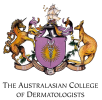Did you know that we all essentially have air filters that are built into our noses? There are structures on each side of our noses known as turbinates, which are responsible for filtering, humidifying, warming, and directing the air that we breathe in through our nasal passages. These structures do us a great service, unless they become enlarged and begin to block the air that they should be filtering. When children constantly feel as if they are congested and stuffy, they may be in need of turbinate reduction or turbinoplasty surgery to open these airways once again.
What Causes a Turbinate To Become Enlarged?
The nasal turbinates become problematic if they are abnormally large, to the point where air cannot freely flow through the nose. These nasal wall structures typically become enlarged because some type of irritant or other issue is causing the tissue to become inflamed. This enlargement can happen if the child has allergies and has been exposed to trigger substances that have caused a reaction. Exposure to irritants, like smoke, smog, or chemical fumes could be to blame. Children who have experienced sinus infections and/or have used nasal decongestant sprays may also be at a greater risk of experiencing inflamed turbinates.
Is Surgery the Only Option?
If you go to an ear, nose, and throat specialist, their initial recommendations for dealing with enlarged turbinates are not likely going to involve surgery. There is a good chance that if the causes of the enlargement are removed or addressed, that the turbinates may reduce in size without surgical intervention. Therefore, your pediatric doctor may suggest that you remove any irritants or allergens from the child’s environment. They might also prescribe medicines to reduce inflammation or treat allergic reactions, or antibiotics to address sinus infections. It is only after your child does not show any response to these treatment methods that turbinate reduction surgery should be considered. Even though this surgical procedure is non-invasive and can be completed using general anesthesia, it is always best to give non-surgical treatment options a fair amount of time to provide results.
What To Expect from Turbinate Reduction Surgery
This nasal surgery is routine. It does not require any incisions to be made to the nose, and can be performed through the nostrils, using endoscopes. Your ear, nose, and throat surgeon does not change the outward appearance or shape of the nose, only the shape of the turbinates inside. Excess tissue is removed from the turbinates, opening up the nasal passages, so your child can breathe easier once again. Even though part of the turbinate is removed, the remaining structures are still able to perform their tasks of filtering the air that passes through the nose. In some cases, depending upon the causes of the child’s blockage, it may be necessary to combine turbinate reduction surgery with other surgical procedures, such as adenoidectomy, endoscopic sinus surgery or septoplasty.
What Are the Risks Involved?
No surgical procedure is completely risk-free, but the risks associated with turbinate surgery are minimal. Approximately one in every one hundred patients has reported nasal bleeding after the surgery. Dissolvable nasal packing may be used to prevent or address this bleeding. For the best recovery, your surgeon will provide follow-up care instructions. This will likely involve performing nasal saline flushes multiple times a day for the first couple of weeks after surgery. Your child will also need to return to their ear, nose, and throat doctor for post-surgery check-ups once after a couple of weeks and again after a couple of months.
If you have questions about turbinate reduction surgery make an appointment to see our ear nose and throat specialist.
References
The post Why Your Child Might Need Turbinate Reduction Surgery appeared first on ENT Clinic Sydney.














